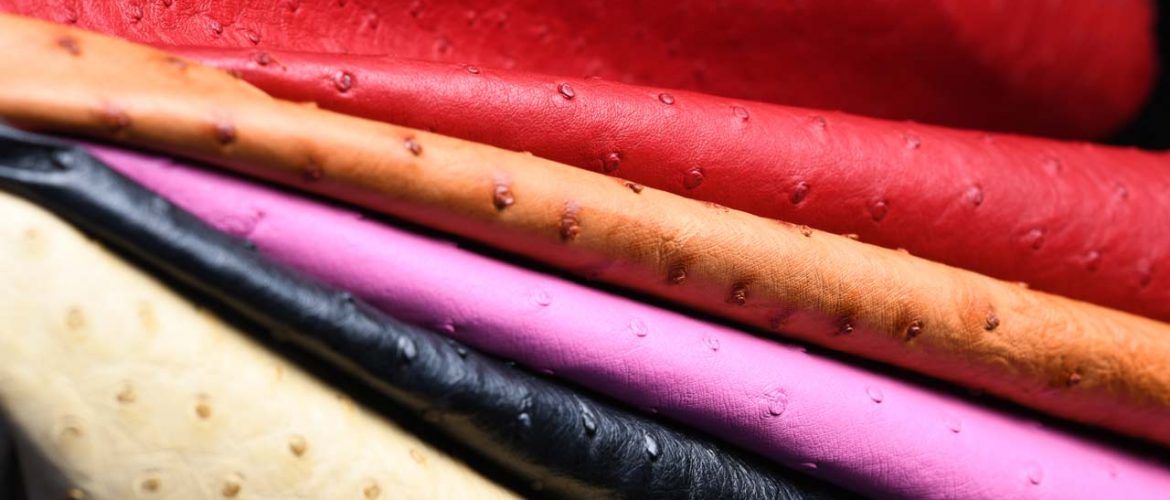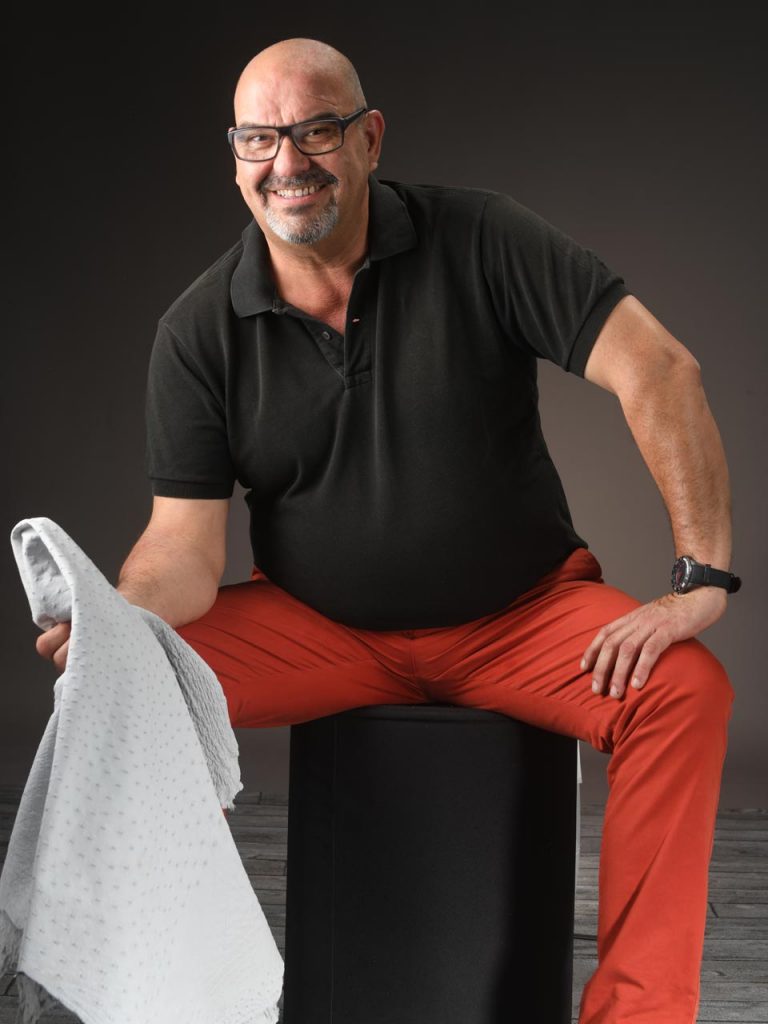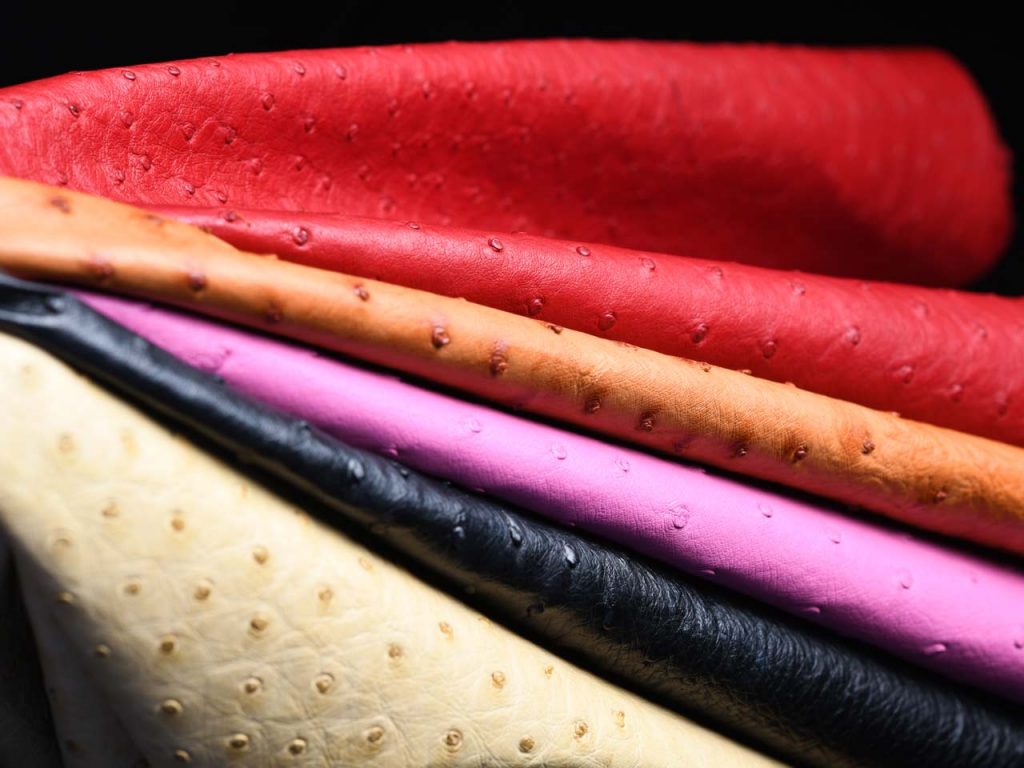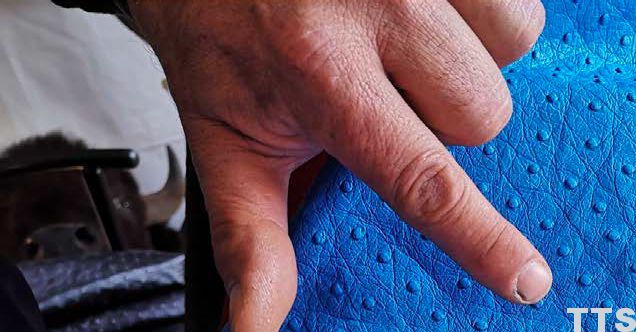The only ostrich skin tanner in France, Jorge Soler chose Cantal and Neussargues-en-Pinatelle to highlight a unique and sought-after know-how. Meet.
Jorge Soler is inexhaustible on the subject. “I met ostrich breeders all over France to offer them to enhance the skins and produce French! “. Originally from Barcelona, Spain, the 50-year-old opened his taxidermy and tannery workshop in Neussargues in 2016.
“A little over a year ago, says the craftsman, an ostrich breeder entrusted me with about twenty skins to make leather. » It’s the click. But also a long road strewn with pitfalls before reaching a convincing result. Because the defleshing technique, consisting in removing the flesh and fat still present on the salted skins, is complex. “You have to have a hand. More exactly, the “stab”.
There is no machine to perform this precise gesture. Jorge Soler tans and gropes, learns, thinks and manages after a year of efforts, and failures, to obtain perfect pearly skin. The satisfaction is immense, and for this entrepreneur at heart, an additional motivation to develop his SME with three employees: La Maison Soler. (The skins arrive salted, for conservation.) If taxidermy and osteology, at the origin of his arrival in Cantal and the creation of the workshop supported by the Department, Hautes Terres community and the municipality, remain lucrative activities, they are nonetheless restricted. And the tannery is currently only supplied with the skins of sheep, goats and cattle entrusted to it by professionals.
Jorge Soler therefore sees in the ostrich skin the opportunity to take a crucial step in the growth of his company. Coming out of industrial tanning workshops, most of which are located in South Africa, ostrich leather is a top-of-the-range product, prized by the biggest luxury houses. Leather goods, shoes, sedan interiors… This flexible, delicate and resistant material offers a unique finish that was no longer produced in France. Till today. Driven by the desire to tanner and produce leather in France One, then two, then three owners of ostrich farms, whose meat is intended for consumption, called on his services, driven by the desire to have the leather tanned in a short circuit and in France.
“Currently, the skins are bought at very low prices and go to China. “Le Cantalien wishes to promote this raw material and negotiate prices with ostrich breeders until it produces French leather “and creates a French quality label”, he announces. From tanning to dyeing, including treading, the craftsman now controls the entire manufacturing process and has become a service provider for his French customers. And he wants to go further. “I can buy and tan pearled ostrich skins, up to 2,500 per year, to market the very high quality leather directly to the big luxury houses. »
To achieve this, La Maison Soler is investing €98,000 in the creation, in 2020, of its own “zero toxic waste” wastewater treatment plant, insists Jorge Soler, coupled with that already in operation at the Neussargues slaughterhouses. Ambitious and thoughtful, Jorge Soler has the cards in hand to win his bet and save a know-how which, without him, would have fallen into oblivion.
David Allignon







